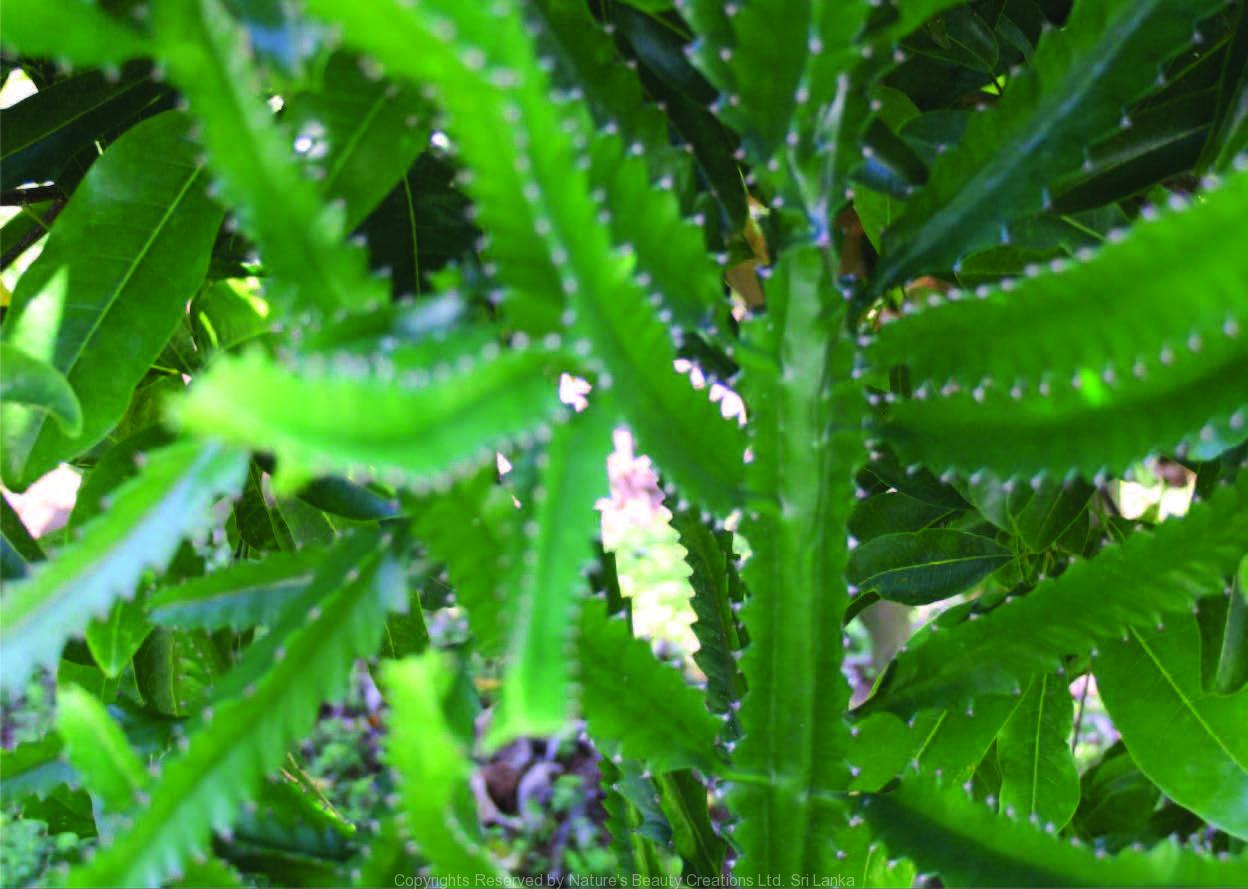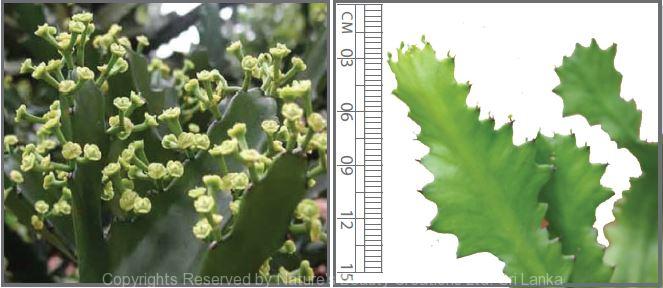

Traditional Knowledge
Useful plant parts :
Latex, root and stem
Uses in traditional medicine :
- Latex of the young branches can be used as a purgative
- Ground root paste is applied on snake bites while fresh root juice is taken in low concentrations for sarve
- Smoke of the dried stem is used as a fumigate for fistulae
Scientific Research
Chemical constituents:
Triterpenes: euphol, antiquol A–C, cycloeucalenol, euphorbol, isohelianol, camelliol from latex and antiquorin, antiquorine A–B, friedelane derivatives, sitosterol and stanols: cycloartanol derivatives from plant
Bioactivity :
Extract prepared using leaves, seeds, bark, fruit, peel and flowers: anticancer particularly hepatoma, colon cancer, leukemia and lymphocytoma; isohelianol and camelliol: inhibiters of Epstein-barr virus antigens
Clinical:
A basic ingredient of the drug ‘Roghan seer’ which is used in motor recovery in hemiplegia
References : Akihisa, T. et al., (2002), Eupha-7,9(11),24-trien-3beta-ol (“antiquol C”) and other triterpenes from Euphorbia antiquorum latex and their inhibitory effects on Epstein-Barr virus activation, J Nat Prod, 65(2), 158-62. Amanullah, H. et al., (2011), Efficacy of massage with roghan seer in motor recovery in hemiplegia secondary to ischaemic stroke, Indian journal of traditional knowledge, 10(4), 731-735. Anjaneyulu, V. and Ravi, K., (1989), Terpenoids from Euphorbia antiquorum, Phytochemistry, 28(6), 1695-1697. Chen, Y. et al., (2009), Terpenoids from Euphorbia antiquorum L., Yao Xue Xue Bao, 44(10), 1118-22. Gewali, M. B. et al., (1990), Constituents of the latex of Euphorbia antiquorum, Phytochemistry, 29(5), 1625-1628. Lin, C. H. and cheng, W. C., (2002), Euphorbia antiquorum extract, a pharmaceutical composition containing the same and methods for treatment of cancers, US patent 200030165579. Min, X. et al., (1989), A diterpene from Euphorbia antiquorum, Phytochemistry, 28(2), 553-555.
Copyrights Reserved By
Natures Beauty Creations




